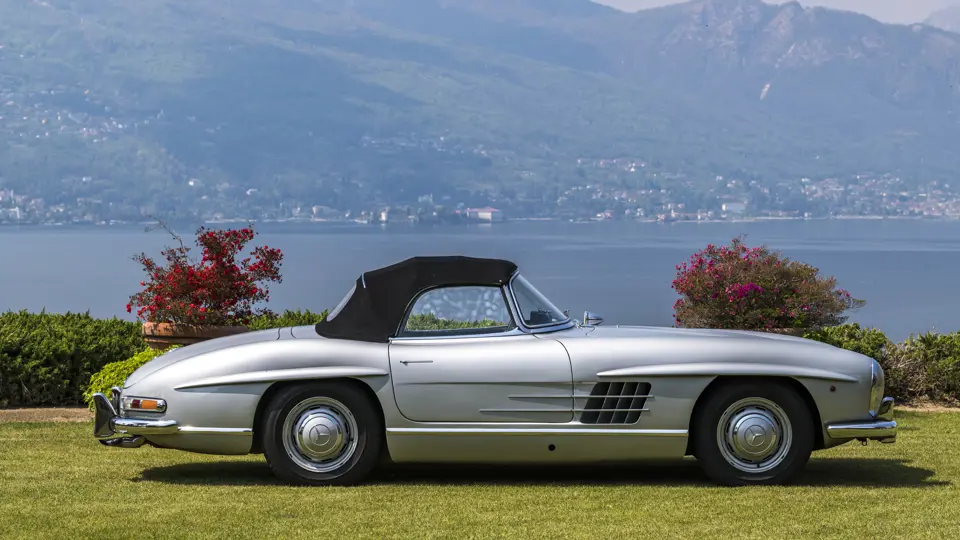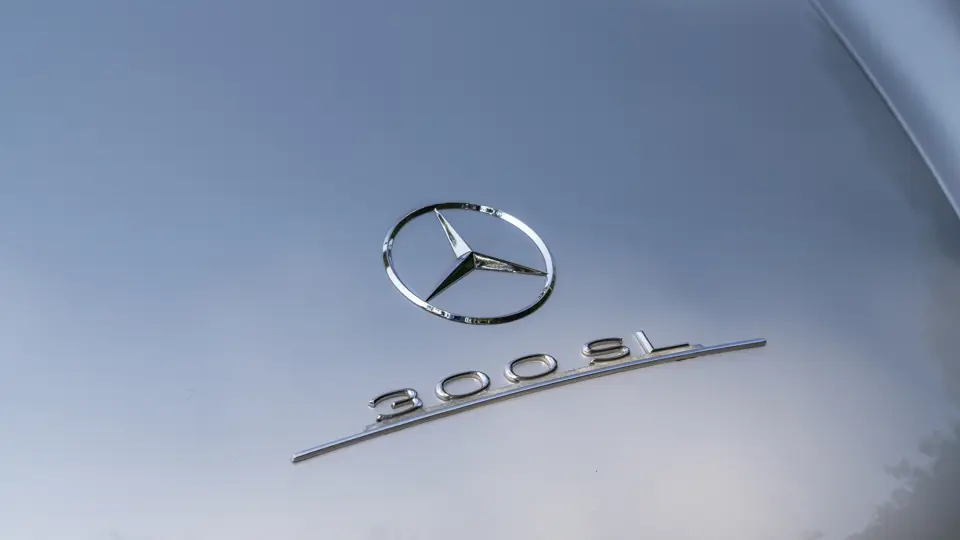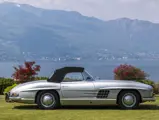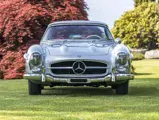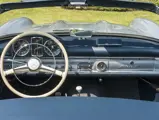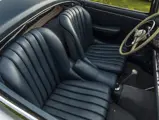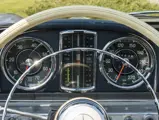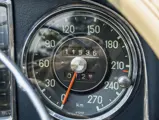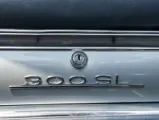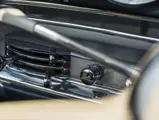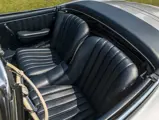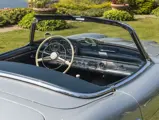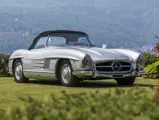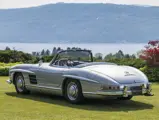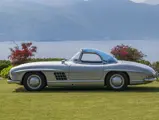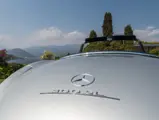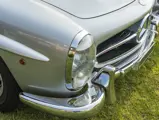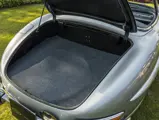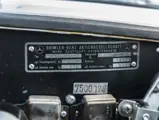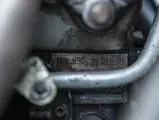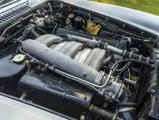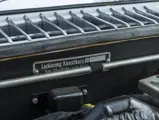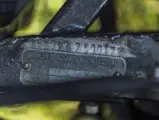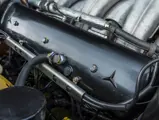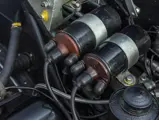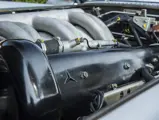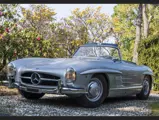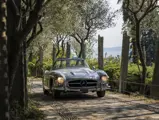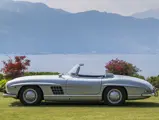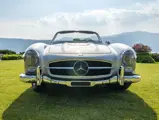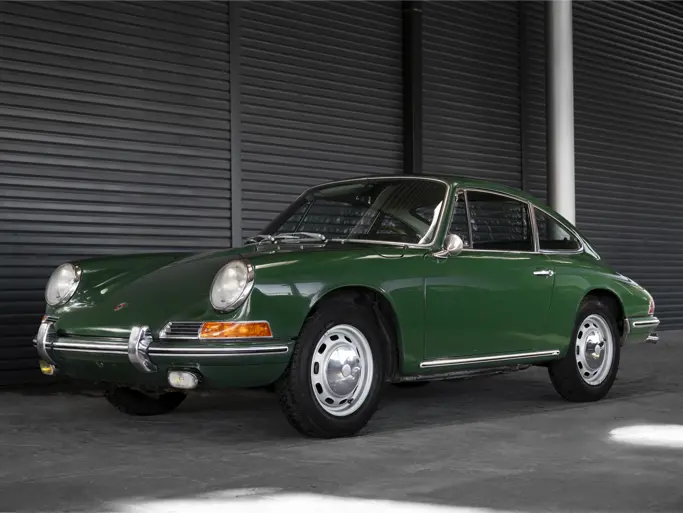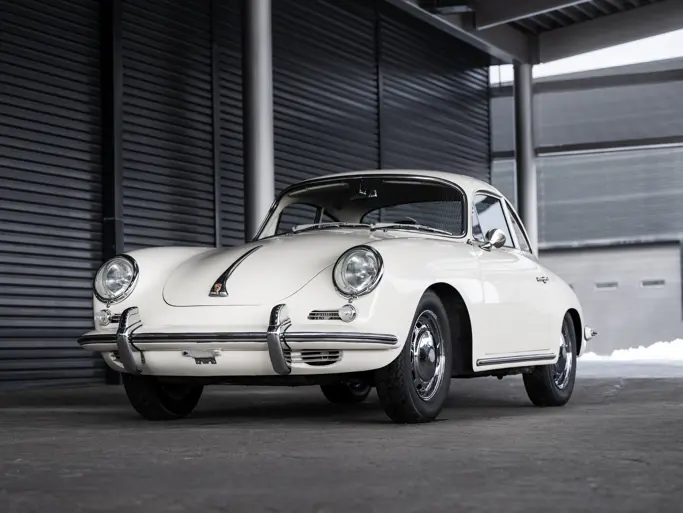
1957 Mercedes-Benz 300 SL Roadster
{{lr.item.text}}
€1,051,250 EUR | Sold
{{bidding.lot.reserveStatusFormatted}}
- First owner was Luigi Innocenti; second owner was Count Werner Rodolfo of Milan
- Under single-family ownership since 1976
- Comprehensive cosmetic and mechanical overhaul in 2009
- Special one-off plexiglass top, created by Agusta helicopters
- Il primo proprietario è stato Luigi Innocenti; il secondo proprietario il conte Rodolfo Werner di Milano
- Dal 1976 di proprietà di una sola famiglia
- Revisione cosmetica e meccanica completa effettuata nel 2009
- Speciale tetto in plexiglass, realizzato dalla Agusta elicotteri in esemplare unico
Like so many of the legendary road cars of the 20th century, the Mercedes-Benz 300 SL was born as a result of a manufacturer captivating the imagination of the automotive world through the domination of the most prestigious motorsport events; in 1952 Mercedes had not only placed 1st and 2nd at the 24 hours of Le Mans, but also 1st, 2nd, and 3rd at the Nürburgring and 1st at the Carrera Panamericana.
The racing car that had achieved these feats was the brainchild of the legendary Rudolph Uhlenhaut, who had been tasked by Mercedes-Benz to restore the motorsport pedigree of the Company using their new production 3-litre engine. Conscious that the pre-war chassis that were available to him were far too heavy to be competitive as a racing sportscar, Uhlenhaut created a clean sheet design that used a tubular spaceframe made from interconnected triangles, which resulted in an extremely rigid yet featherweight solution. Tipping the scales at just 82-kg, it was handicapped only by the requirement for the frame flanking the cockpit to extend upwards, to ensure no stiffness was lost, which in turn necessitated the introduction of a design element that is perhaps one of the most widely recognised in automotive history, gullwing doors.
Aside from the infamous door design, the bodywork was also honed to reduce its drag coefficient to a remarkable 0.25, with even the engine being canted 50 degrees to allow for a lower bonnet line. As well as tilting the powertrain, Uhlenhaut’s engineers managed to raise the power output from 115 Hp at 4600 rpm to 171 Hp at 5200 rpm and the rest, as they say, would have been history but for a certain Max Hoffman.
Hoffman had become the sole distributor for Mercedes-Benz in the USA in 1953 and had seen the reaction of his customer base to the triumphs of the 1952 racing season. So confident was Hoffman of his ability to read a market, that he approached Mercedes-Benz and implored them to make a road going variant of the 300 SL racer; a request that Mercedes-Benz would have likely dismissed as fantasy had Hoffman not guaranteed an order of at least 1,000 cars. Thus, the planned development for the racer was put on hold, in deference to the production of what would be unveiled to the world at the 1954 New York Motorshow as the Mercedes-Benz 300 SL.
The reaction was ubiquitous in its praise for the car, with journalists falling over each other to heap compliments on what Mercedes-Benz had created: a genuine road going version of the 300 SL racer; a car with the various creature comforts required to satisfy the most well-heeled of sports car buyers, alongside all the upgrades that Mercedes-Benz had developed for its racing version. The most noteworthy of these upgrades was the introduction of Bosch fuel injection for the engine, which raised the power output to 240 bhp and unlocked a top speed in excess of 160 mph, according to which final drive ratio was specified. Over the course of the next three years, 1,400 examples were produced before Mercedes-Benz decided to shift production and answer the calls for a roadster variant, which had been growing ever louder from across the Atlantic.
The roadster was far more than just a convertible version of the coupe. With the extra time for development, Mercedes-Benz was able to create a more ergonomic and user-friendly car, correcting some of the inevitable weaknesses that the hurried conversion of the racer into the road car in 1954 had brought with it. Most noticeably, the chassis was successfully altered from the firewall backwards to permit the use of conventional doors with winding windows, whilst adjustable seats were also fitted alongside a glovebox, longer wiper blades, wider wheels and a basket of items from the contemporary 300 Saloon. Under the bonnet, the Bosch fuel injection system was perfected, the sports camshaft option became standard, and power was now transmitted to the road via a low pivot swing axle, which transformed the rear stability of the car. A total of 1,858 300 SL Roadsters were produced from 1957 to 1963, a remarkable figure given the stratospheric cost of the car at the time.
This particular car is an early example and was delivered to its first owner in Rome on 14 August 1957 and registered on Roma numberplates as 284882. That gentleman was none other than Luigi Innocenti, of the Innocenti Company who owned one of the biggest factories in Italy, producing Lambretta’s, Minis and much more, from its base in Lambrante. Innocenti enjoyed the car for the rest of the summer of 1957 before passing it onto its second owner, Count Werner Rodolfo of Milan on 28 February 1958, who registered it on the Milan numberplate 590064 MI. During Count Werner’s ownership the car was repainted from its factory silver to metallic light blue and retrimmed in none other than leopard print cloth. It was also joined by a special one-off glass hard roof, created by Count Agusta of Agusta helicopters who also owned a 300 SL and was a close friend of Count Werner.
It passed into the hands of the father of its current owner on 16 September 1976 after years of persuading Count Werner to part with the car. It has remained in the family ever since and benefitted from a light restoration in 2009 when the car was returned to its factory colour of silver. Its owner is keen to stress that it was not a substantial project as the bodywork was still in fantastic condition, but instead was a comprehensive cosmetic and mechanical overhaul. It should not come as a surprise therefore that the car presents in beautiful condition throughout today.
A careful inspection has confirmed that the engine, chassis, rear axle, front uprights on both sides are matching the build sheet. The panels could be removed revealed the body number 141. The speedometer mentions the 3,64:1 ratio that is also stamped on the rear axle, and the five wheels are dated 1957.
A very genuine example, European specification, matching number powertrain and colours, fitted with a unique hardtop that would attract the eyes of the judges of any concourse!
Come tante delle leggendarie auto stradali del 20° secolo, la Mercedes-Benz 300 SL è nata grazie alla capacità di un costruttore di catturare l'immaginazione del mondo automobilistico attraverso il dominio delle più importanti competizioni motoristiche; nel 1952 la Mercedes si era piazzata non solo 1°e 2° alla 24 Ore di Le Mans, ma anche 1°, 2° e 3° al Nürburgring e 1° alla Carrera Panamericana.
L'auto da corsa che aveva realizzato queste imprese era nata da un'idea del leggendario Rudolph Uhlenhaut, incaricato da Mercedes-Benz di arricchire il pedigree automobilistico della Casa utilizzando il nuovo motore di serie, della capacità di 3 litri. Consapevole del fatto che il telaio anteguerra a sua disposizione era troppo pesante per essere competitivo come auto sportiva da corsa, Uhlenhaut ha creato, partendo da un foglio bianco, una vettura che utilizzava un telaio tubolare costituito da triangoli interconnessi tra loro, che si traduceva in una soluzione estremamente rigida ma leggera. Con un peso che portava l’ago della bilancia a soli 82 kg, questo telaio aveva come solo vincolo la necessità di dover fiancheggiare l'abitacolo, estendendosi verso l'alto, per garantire che non andasse perduta rigidità. Questo, a sua volta, ha richiesto l'introduzione di un elemento di design che è forse uno dei più ampiamente riconosciuti nella storia dell’automobile: le portiere ad ali di gabbiano.
A parte il famoso disegno delle porte, la carrozzeria è stata affinata per ridurre il suo coefficiente di resistenza aerodinamica a un notevole 0,25, arrivando persino ad inclinare il motore di 50 gradi per consentire una linea del cofano più bassa. Oltre a inclinare il propulsore, gli ingegneri di Uhlenhaut sono riusciti ad aumentarne la potenza da 115 Cv a 4600 giri a 171 Cv a 5200 giri. Il resto, come si suol dire, sarebbe presto diventato storia se non fosse stato per un certo Max Hoffman.
Hoffman era diventato il distributore esclusivo per Mercedes-Benz negli Stati Uniti nel 1953 e aveva avuto modo di osservare la reazione dei suoi numerosi clienti ai trionfi della stagione delle corse del 1952. Hoffman era così fiducioso della sua capacità di prevedere il mercato che, si avvicinò a Mercedes-Benz e la implorò di fare una variante stradale della 300 SL da corsa. Una richiesta che Mercedes-Benz avrebbe, molto probabilmente, respinto come fantasia se Hoffman non avesse garantito un ordine di almeno 1.000 auto. Pertanto, lo sviluppo pianificato per la versione da corsa per la stagione 1953 fu sospeso, in ossequio alla produzione di quella che sarebbe stata svelata al mondo, durante il New York Motorshow del 1954, come Mercedes-Benz 300 SL.
La reazione univoca è stata, fin da subito, di grande lode per l'auto, con i giornalisti che sembravano gareggiare per trovare i migliori aggettivi per descrivere ciò che Mercedes-Benz aveva creato: una vera versione stradale della 300 SL da corsa, un'auto con il comfort necessario per soddisfare i più ricchi acquirenti di auto sportive, unito a tutte le novità che Mercedes-Benz aveva sviluppato per la sua versione da corsa. La novità più degna di nota è stata l'introduzione dell'iniezione di carburante della Bosch, che ha aumentato la potenza a 240 CV e ha permesso di raggiungere una velocità massima, variabile a seconda dei rapporti montati, nell’ordine dei 250 km/h. Nel corso dei tre anni successivi, furono prodotti 1.400 esemplari prima che Mercedes-Benz decidesse di rispondere alle richieste, sempre più pressanti provenienti da oltre oceano, di una variante roadster che entrò in produzione sostituendo la coupè.
La Roadster era molto più di una semplice versione decappottabile della coupé. Grazie al maggior tempo a disposizione per lo sviluppo, Mercedes-Benz è stata in grado di creare un'auto più ergonomica e facile da usare, correggendo alcune delle inevitabili debolezze che la frettolosa conversione, avvenuta nel 1954, in vettura stradale dell’auto da competizione aveva portato con sé. Tra le modifiche più evidenti, il telaio modificato a partire dal parafiamma per consentire l'uso di porte convenzionali con finestrini discendenti, i sedili regolabili, il cassetto portaoggetti, spazzole tergicristallo più lunghe, ruote più larghe e tutta una serie di particolari prelevati dalla contemporanea 300 berlina. Sotto il cofano, il sistema di iniezione del carburante Bosch è stato perfezionato, l'albero a camme sportivo, da optional a richiesta, è diventato di serie e la potenza veniva trasmessa alla strada tramite un asse oscillante con fulcro in basso, che ha trasformato la stabilità ed il comportamento del retrotreno dell'auto. Dal 1957 al 1963 furono prodotte in totale 1.858 300 SL Roadster, una cifra ragguardevole dato il costo stratosferico dell'auto all'epoca.
Nello specifico, questa vettura è una di quelle prodotte verso l’inizio della serie, ed è stata consegnata al suo primo proprietario, a Roma, il 14 agosto 1957 e targata Roma 284882. Quel signore era nientemeno che Luigi Innocenti, della Società Innocenti che possedeva una delle più grandi fabbriche in Italia, con base a Milano Lambrate, dove si producevano Lambretta, Mini e molto altro. Innocenti si è goduto l'auto per il resto dell'estate del 1957 prima di passarla, il 28 Febbraio 1958, al suo secondo proprietario, il conte Rodolfo Werner di Milano chi l'ha registrato sotto Milano targa MI 590064. Durante la proprietà del conte Werner, l'auto fu riverniciata, passando dall'argento di fabbrica all'azzurro metallizzato mentre gli interni sono stati rivestiti con, nientemeno che, un panno leopardato. A questo si aggiungeva anche uno speciale tetto rigido in vetro, un pezzo unico, creato dalla fabbrica di elicotteri Agusta. Il Conte Agusta, lui stesso possessore di una 300 SL, era un intimo amico del Conte Werner.
La 300 SL Roadster è stata acquistata dal padre dell'attuale proprietario il 16 settembre 1976, dopo che aveva passato anni a persuadere il conte Werner a separarsi dall'auto. Da allora, è rimasta di proprietà della famiglia e ha beneficiato di un leggero restauro nel 2009, quando l'auto è stata restituita al suo colore Argento originale. Il suo proprietario ci tiene a sottolineare che non si è trattato di un restauro completo poiché la carrozzeria era ancora in condizioni splendide, ma, piuttosto, di una revisione estetica e meccanica completa. Non dovrebbe quindi sorprendere che l'auto, ancora oggi, si presenti in buonissime condizioni.
Un'attenta ispezione ha confermato che il motore, il telaio, l'asse posteriore, i montanti anteriori su entrambi i lati corrispondono a quanto indicato nella scheda di produzione. I lamierati se rimossi rivelerebbero il numero di carrozzeria 141. Il tachimetro riporta il rapporto al ponte di 3,64: 1, lo stesso stampato sull'assale posteriore e i cinque cerchi sono datati 1957.
Un esemplare molto originale, con specifiche europee, motore e cambio originali e colori ancora oggi corrispondenti a quelli della produzione, dotato di un hard-top unico, capace di attirare gli occhi dei giudici in qualsiasi concorso!

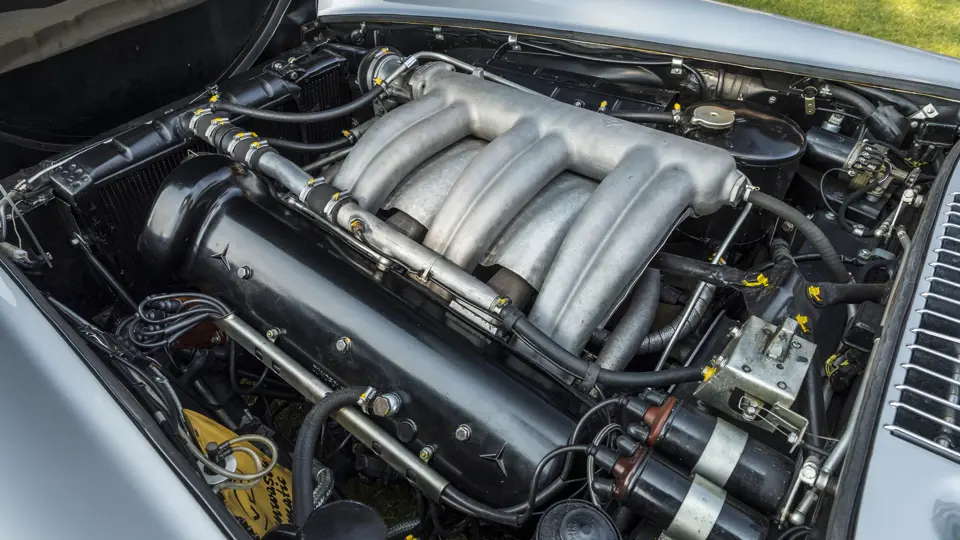


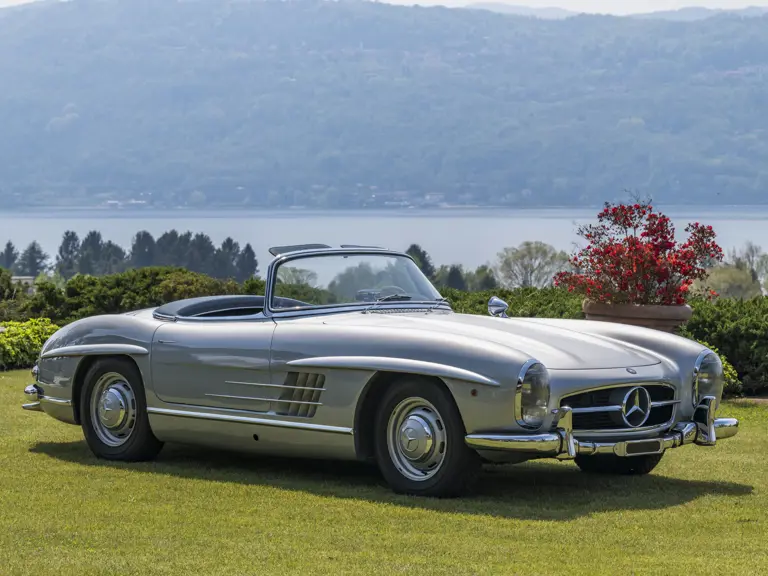
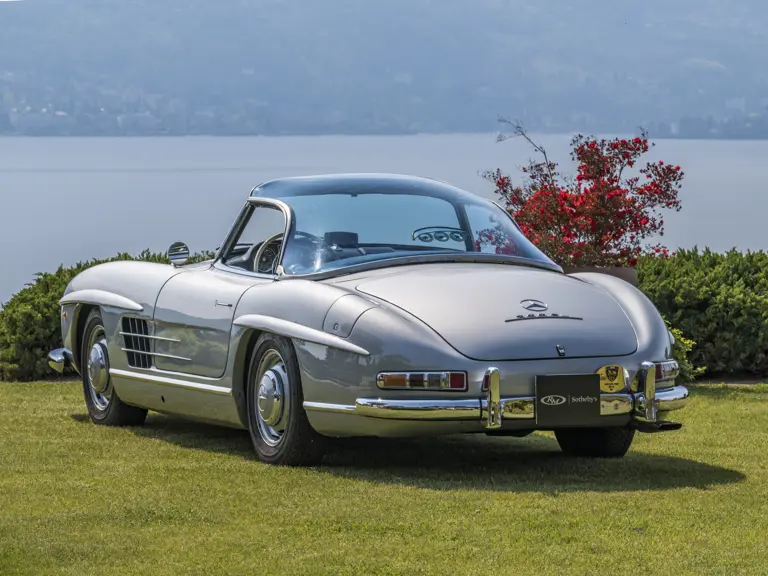
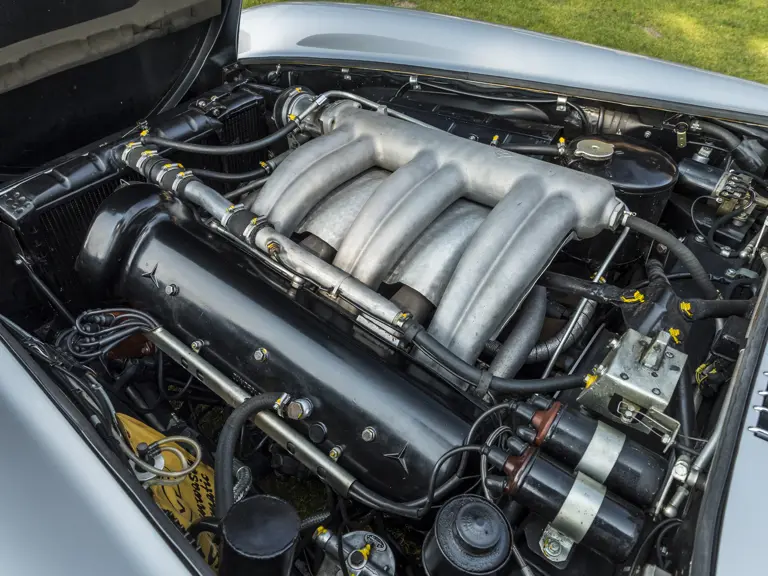
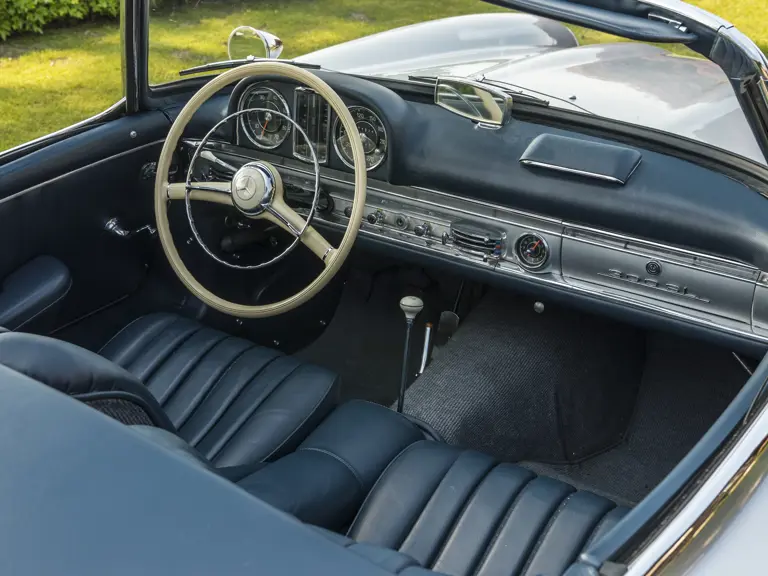
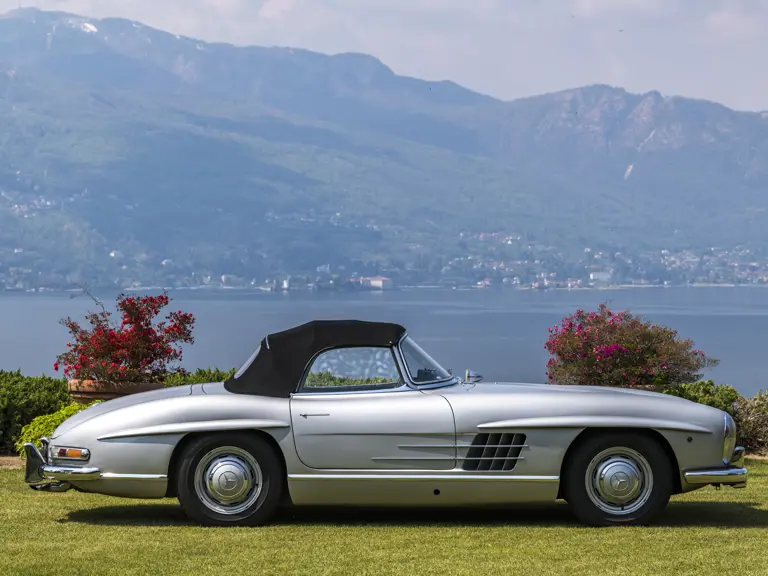
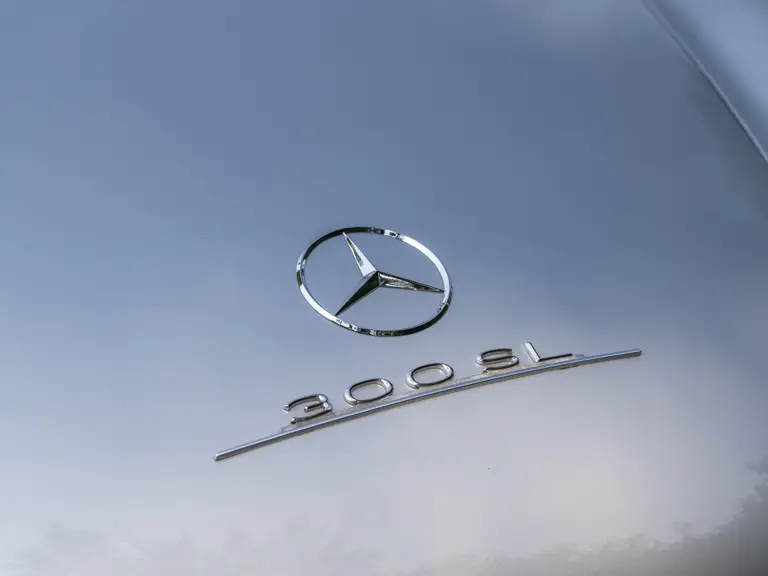
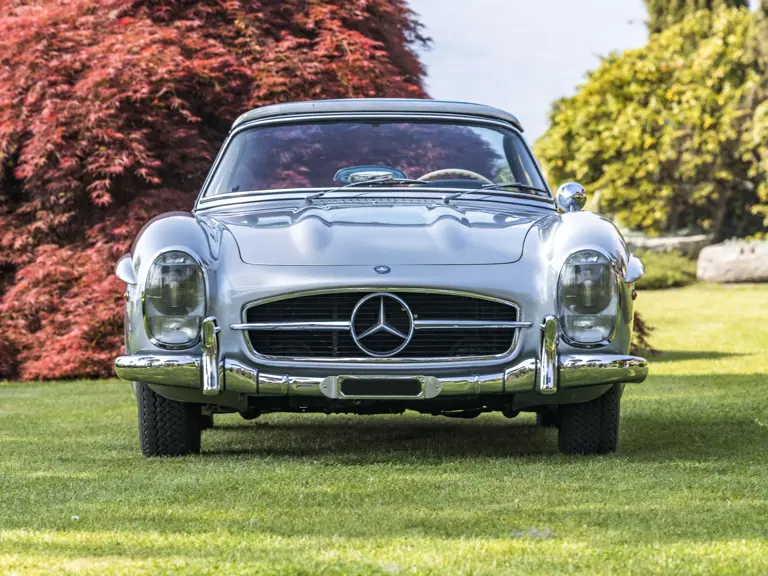
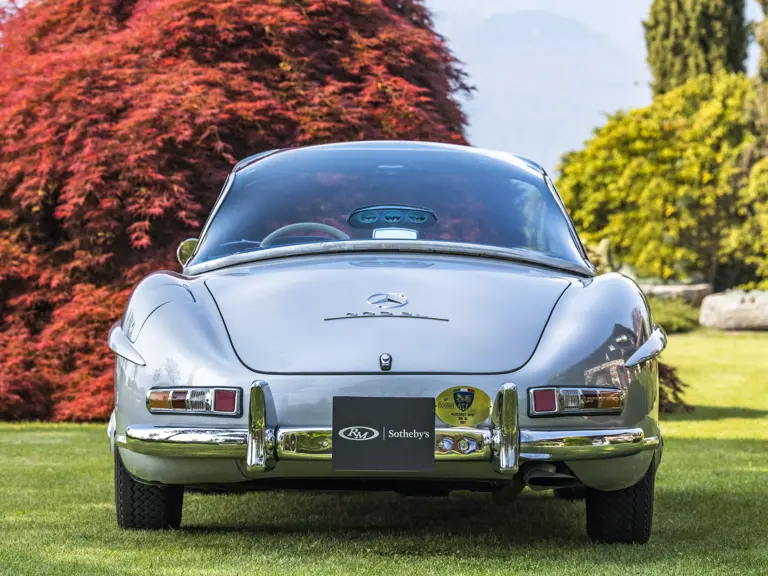
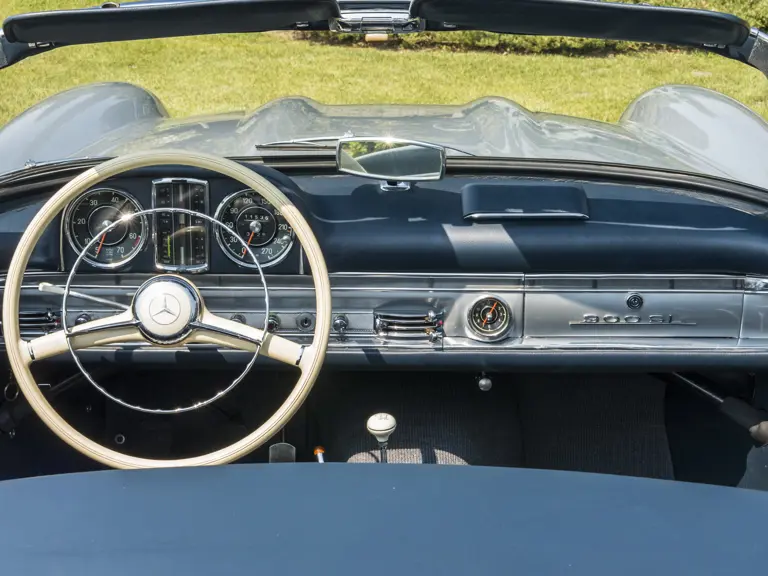


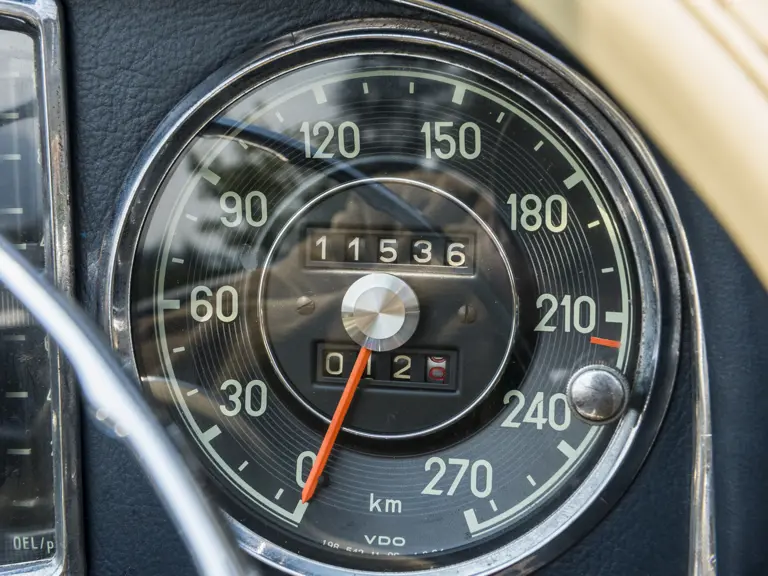
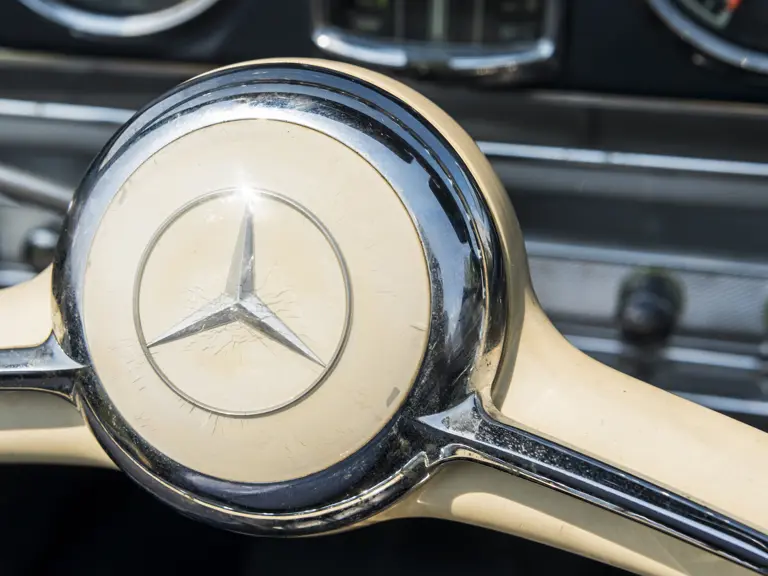
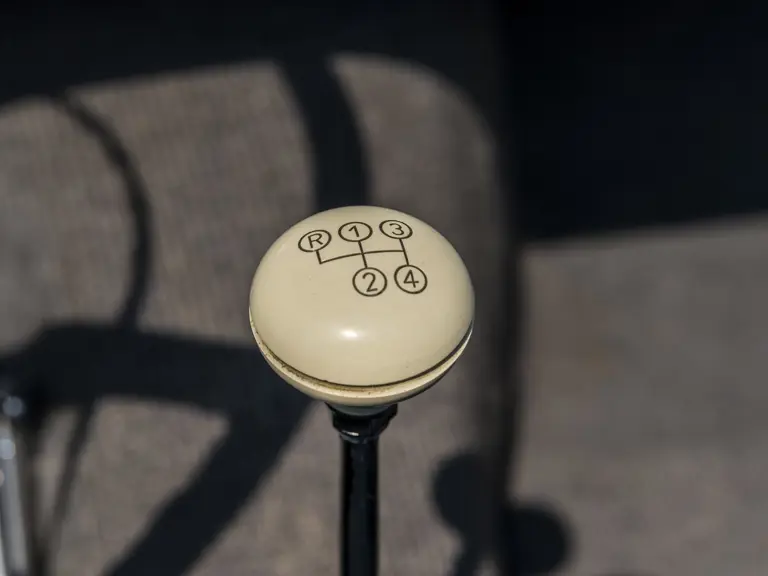

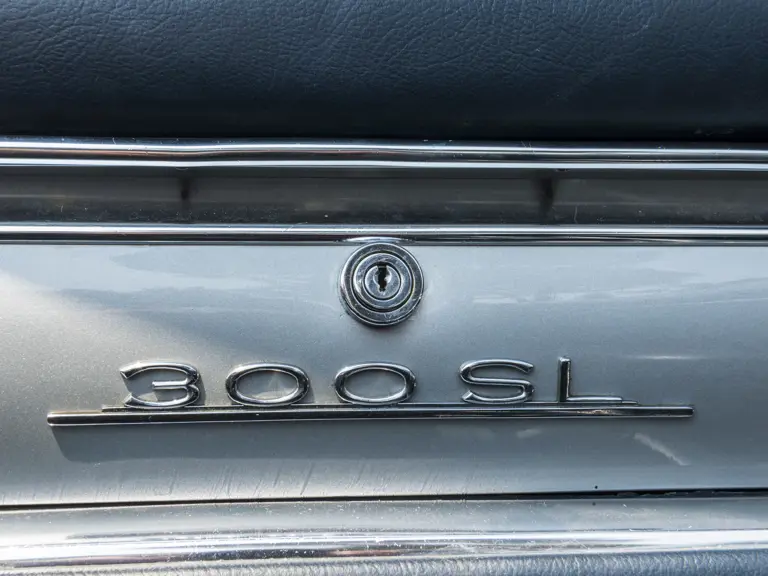
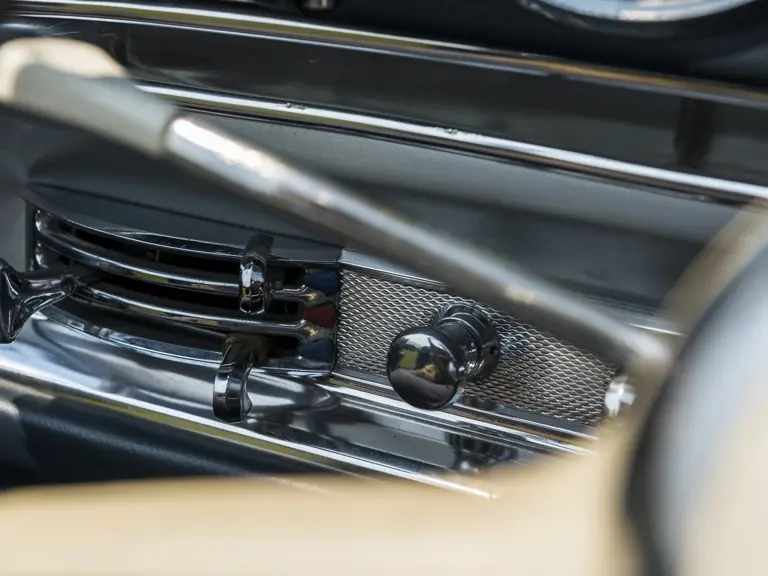

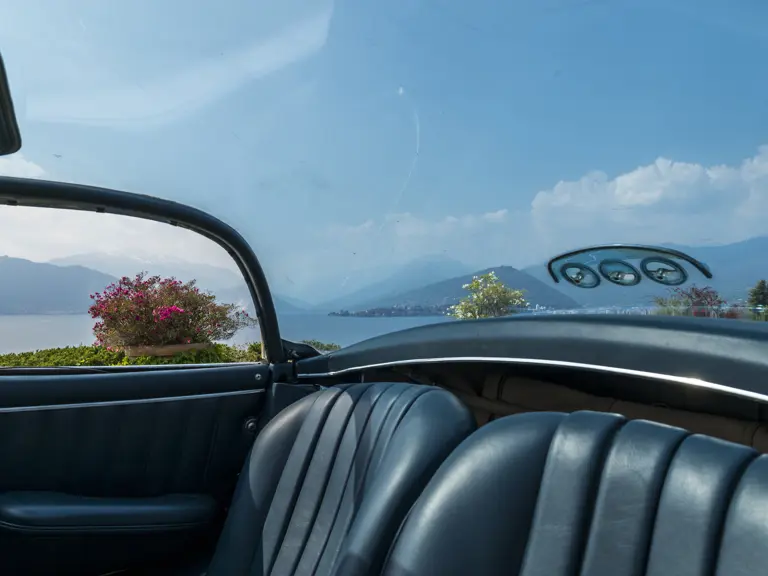
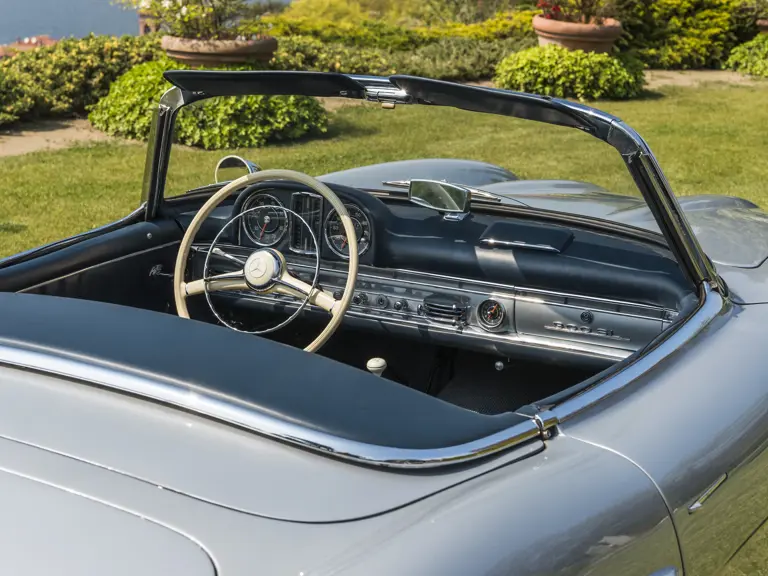
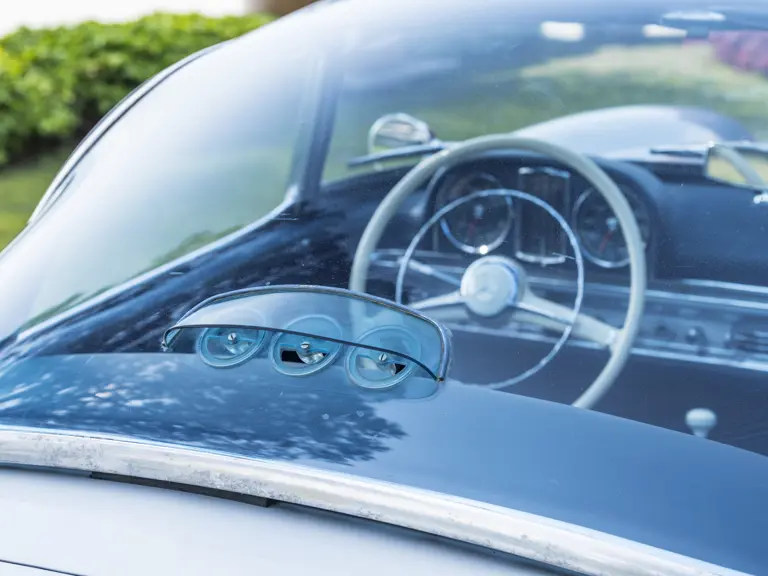

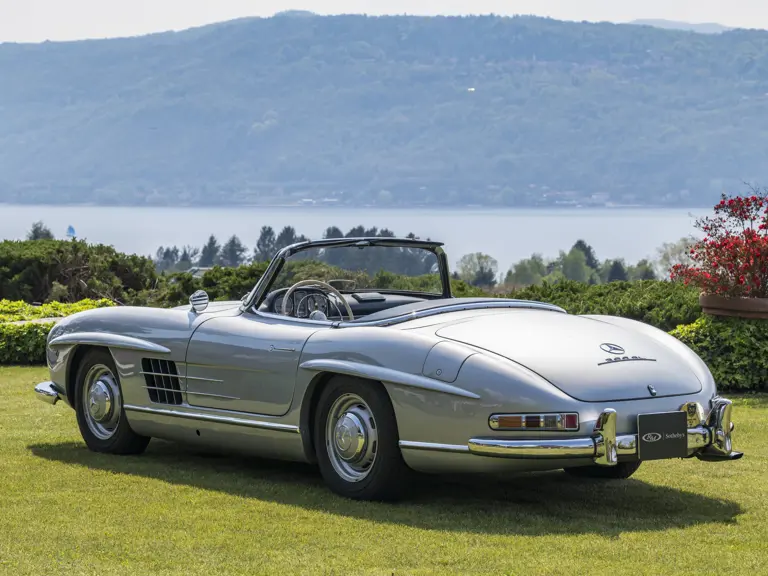
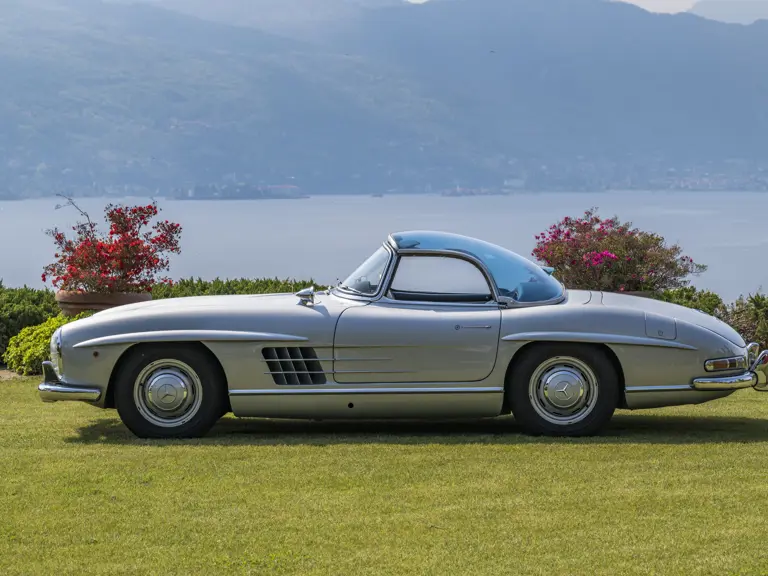
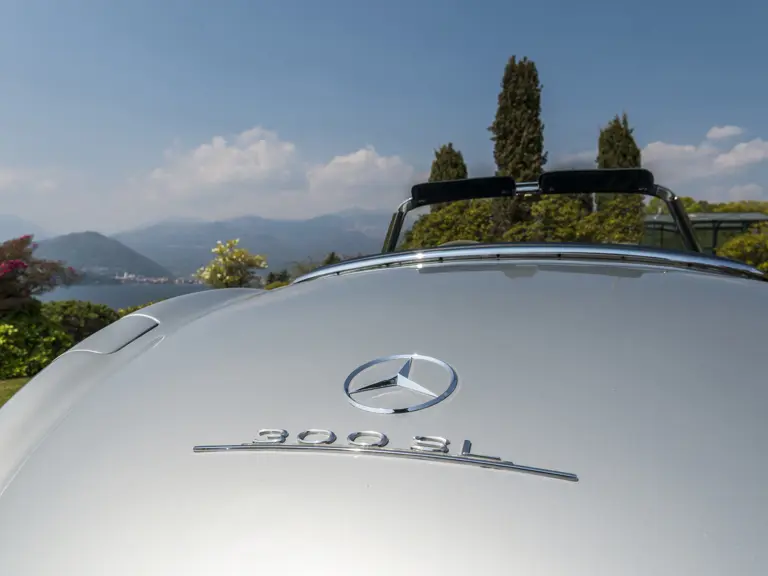
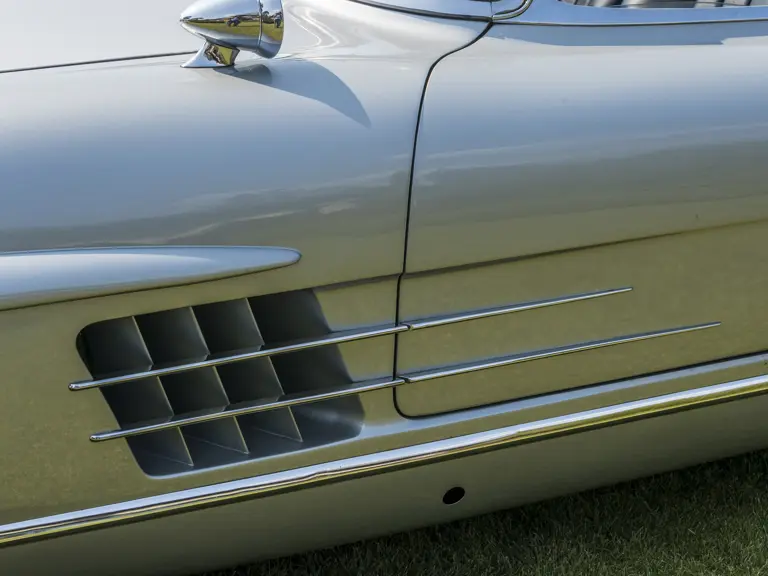
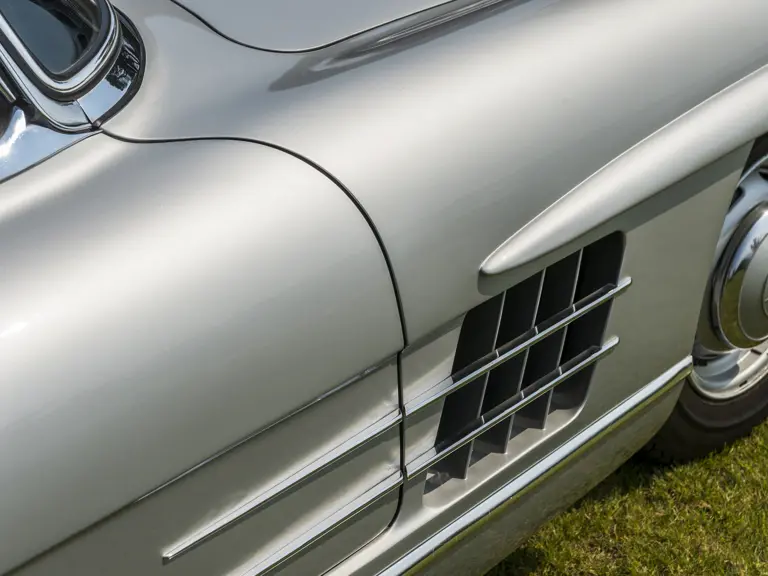
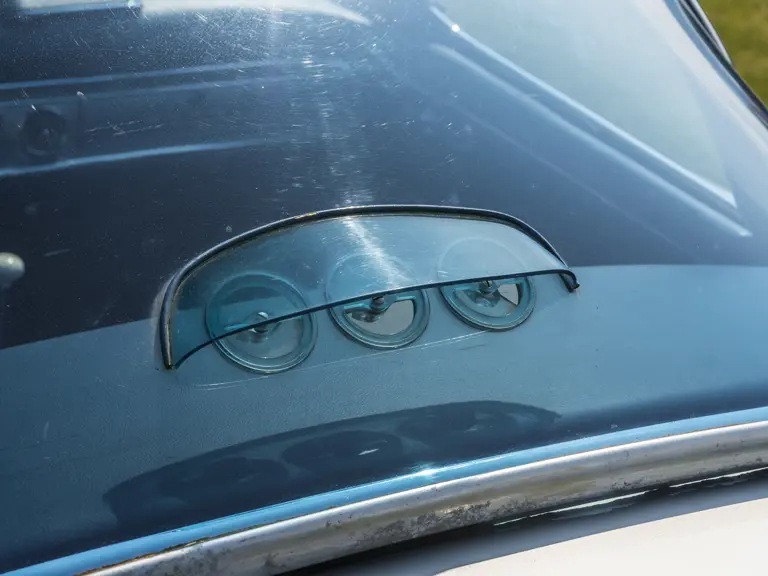
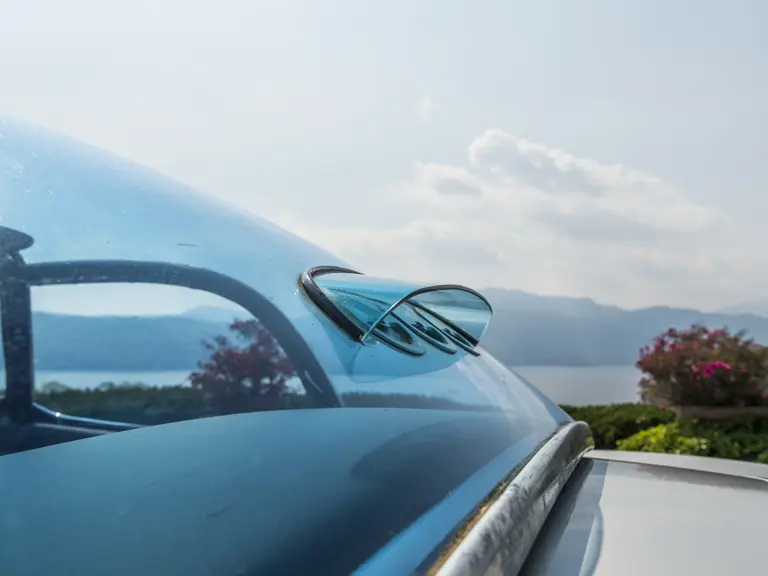
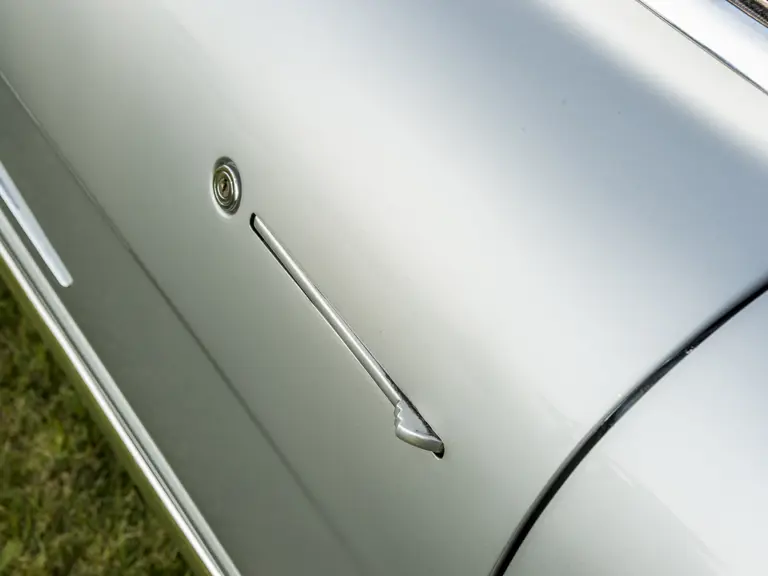
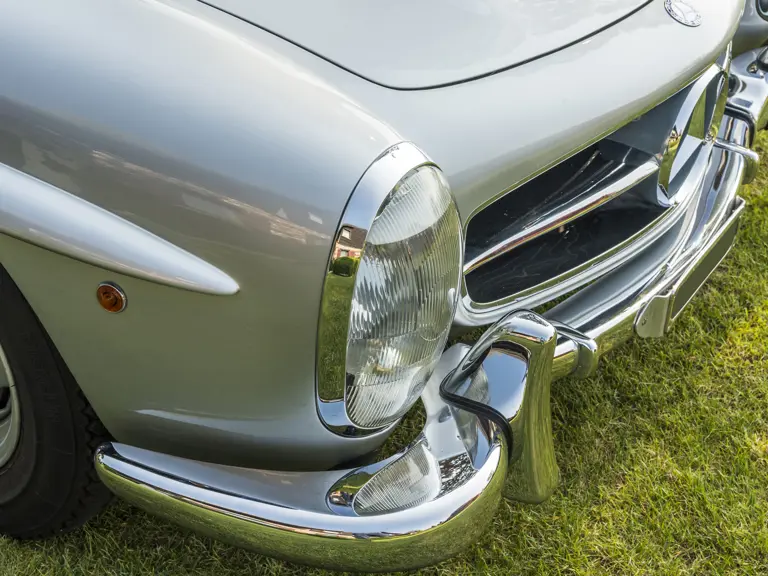
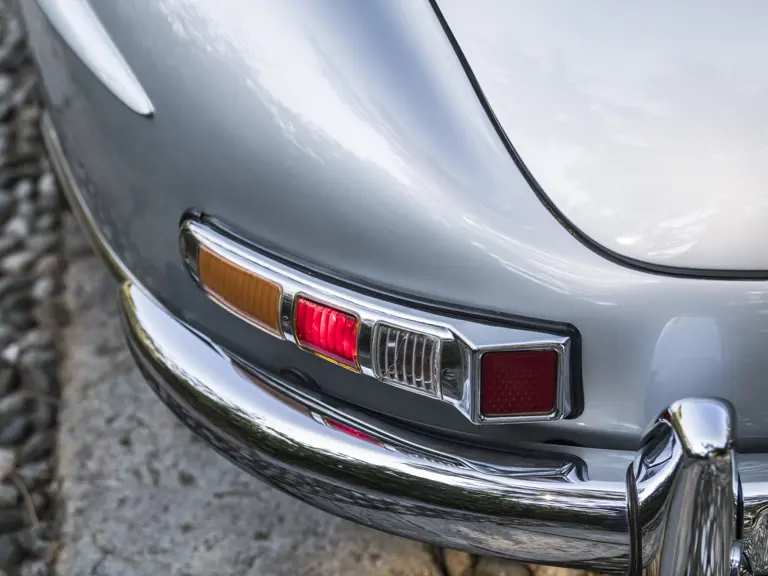
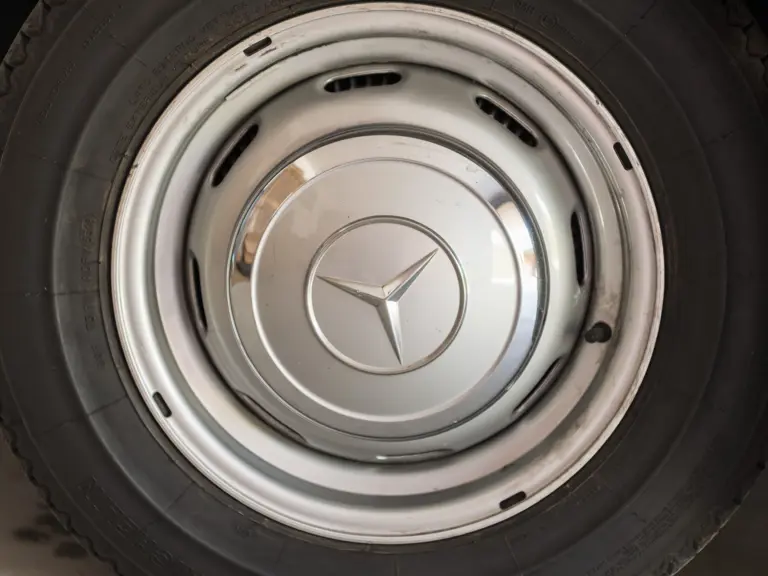
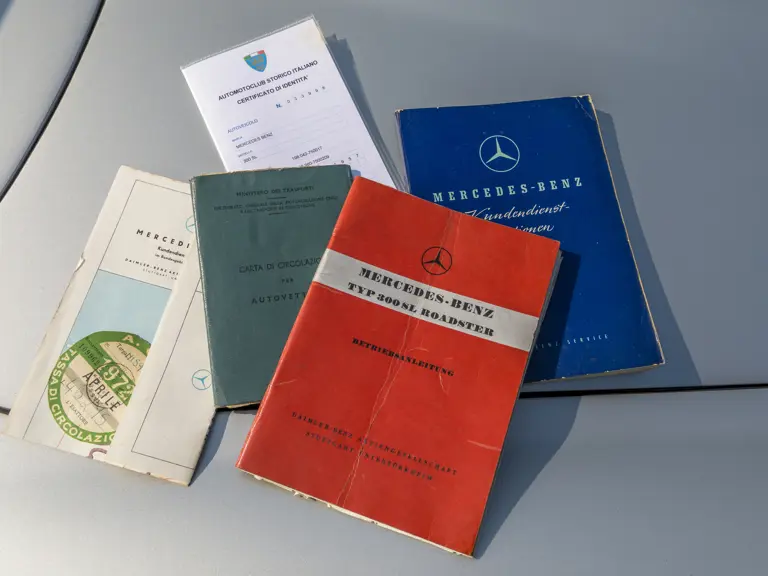
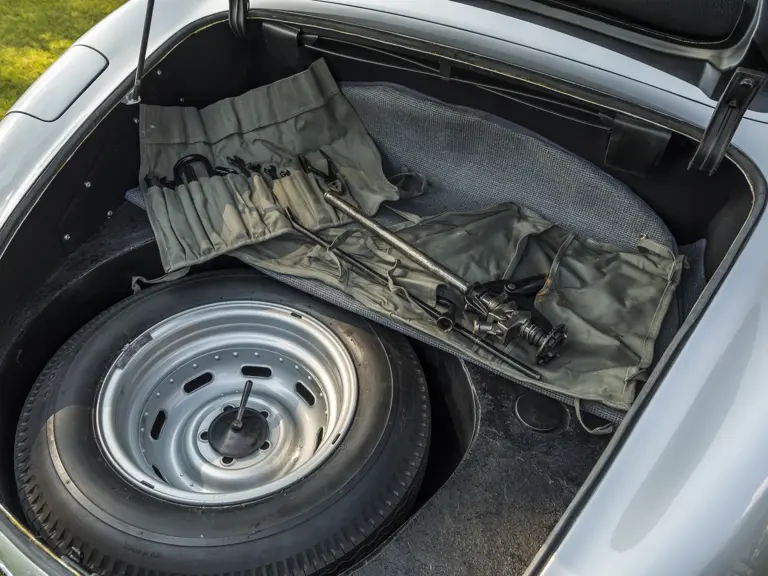
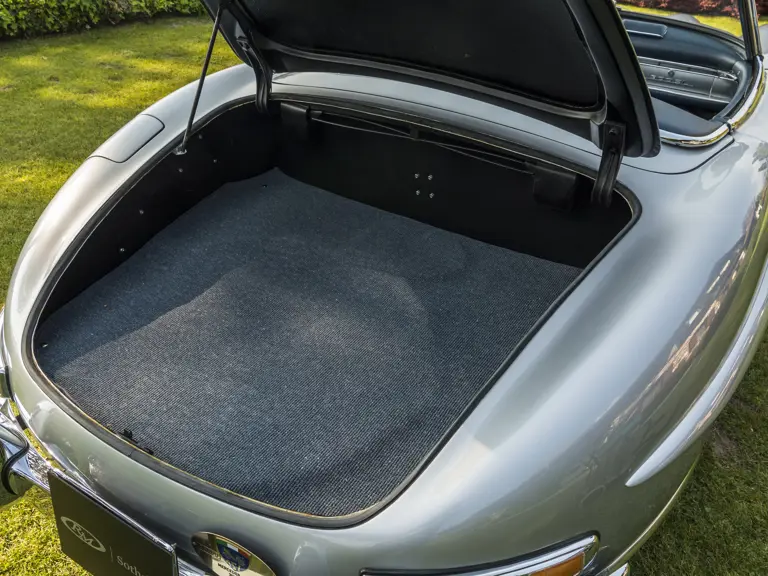
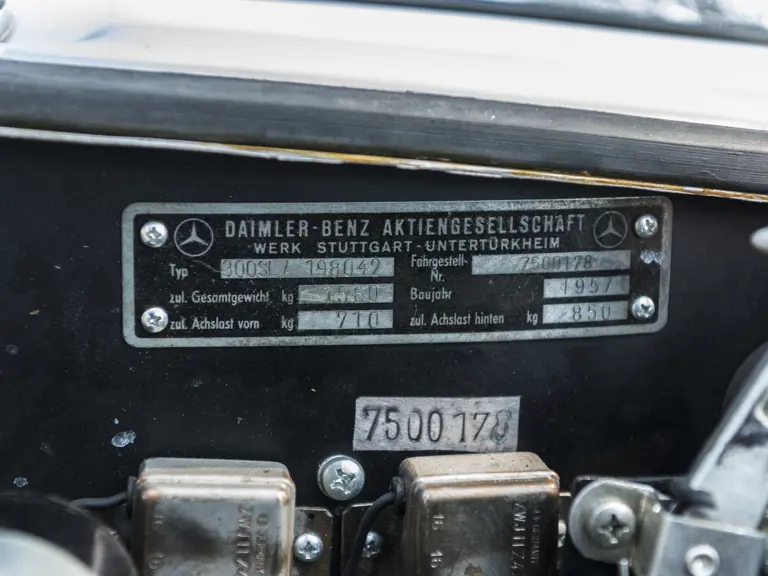

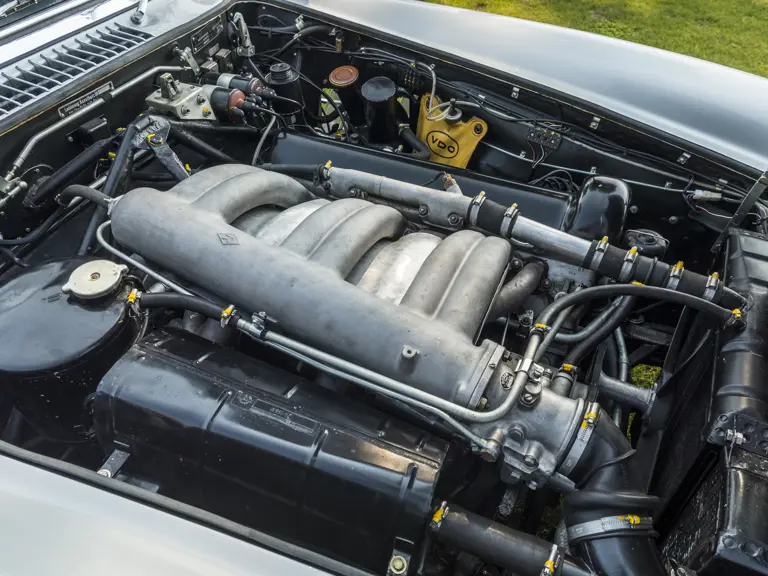
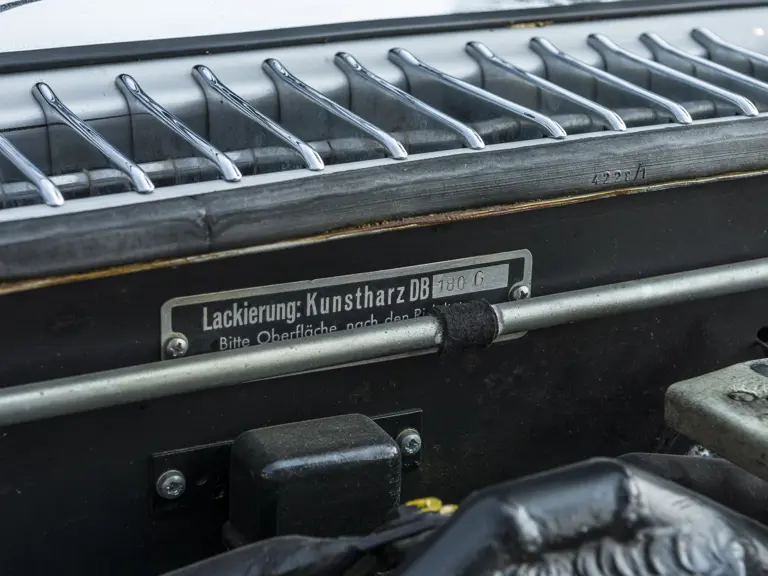
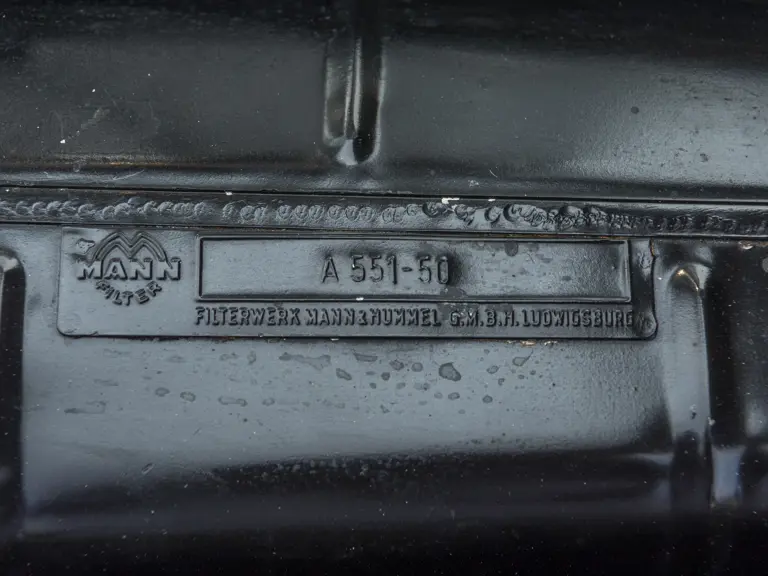
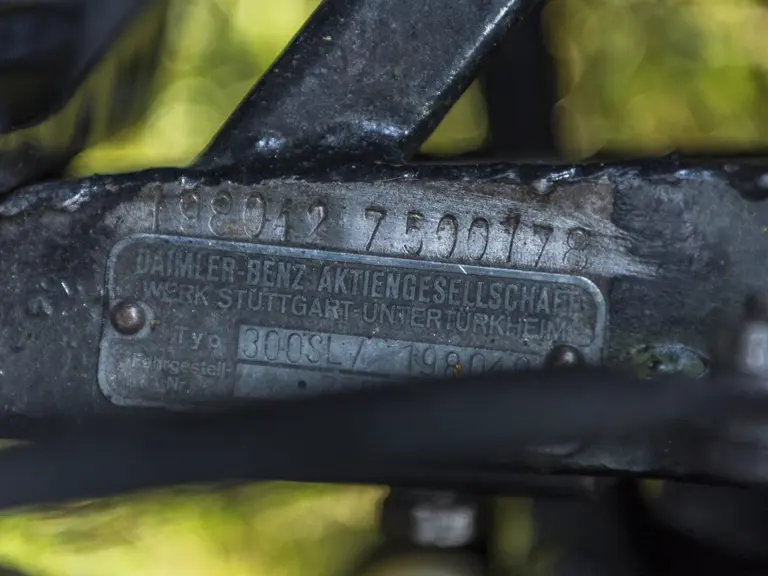

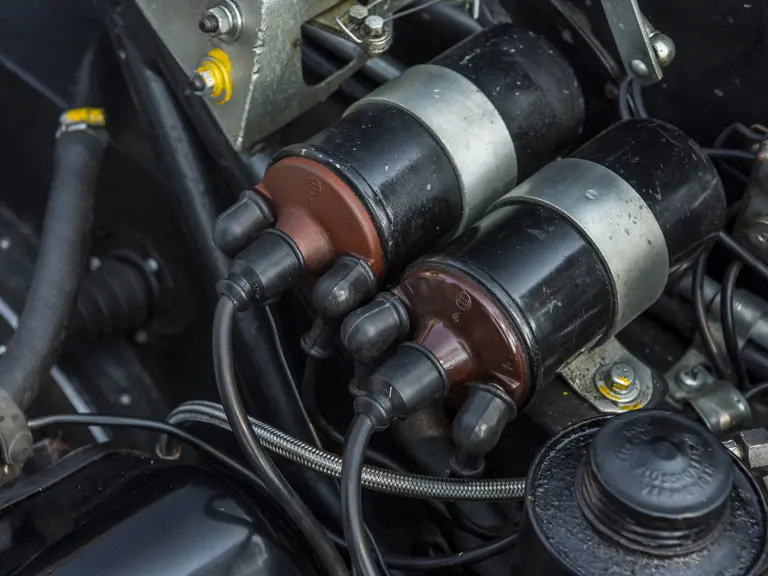


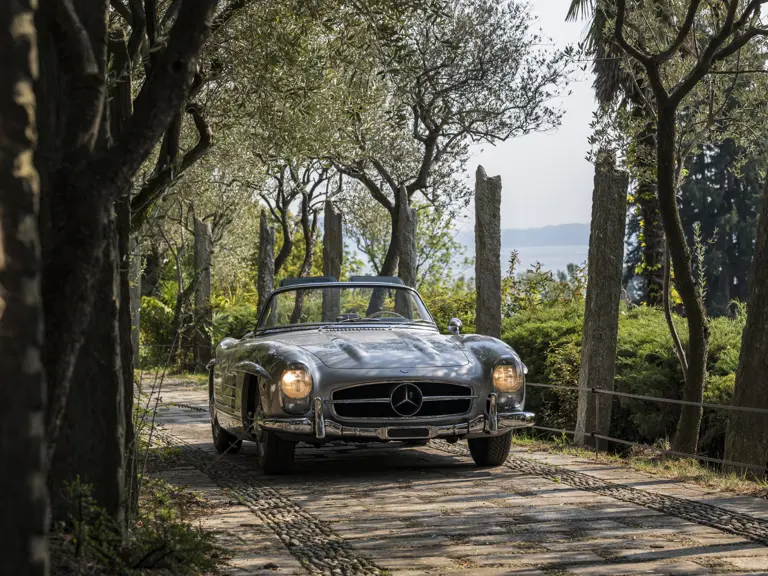
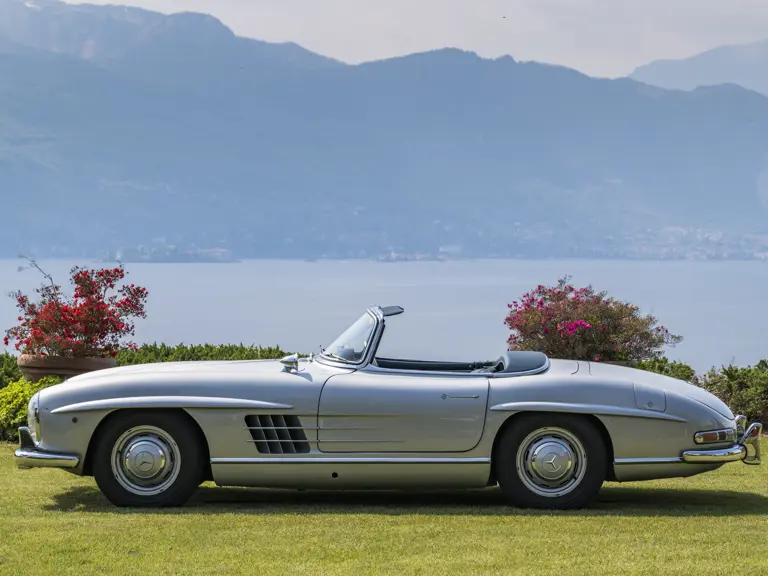
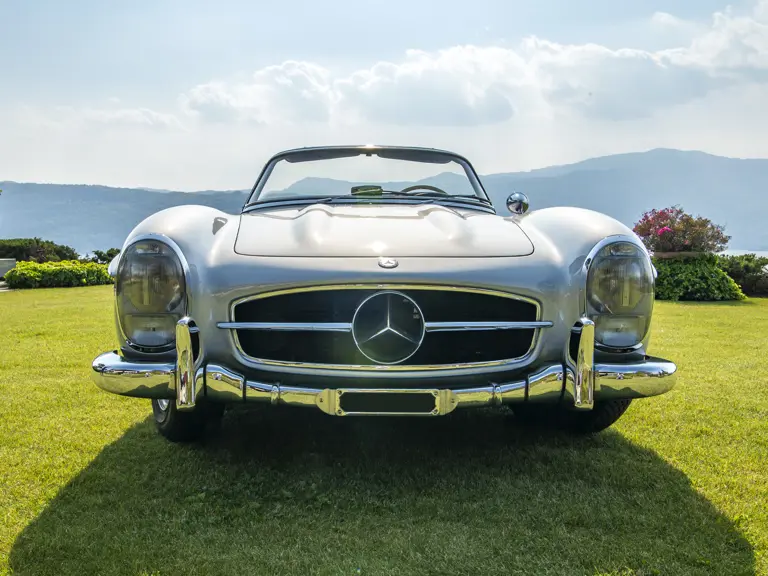
 | Milano, Italy
| Milano, Italy
